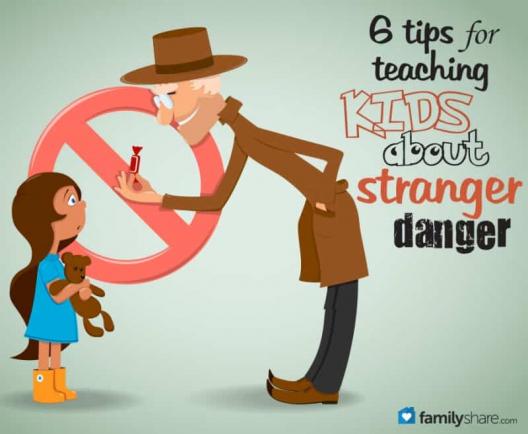
Children rely on adults to help them with many things. Their innocent trusting nature is sweet, but parents also need to teach children to be safe. Unfortunately, there are people who would harm children if given the chance. It's a tricky balance to help kids understand safety without making them wary of everyone they meet. These six ideas will help you teach your kids how to be safe and happy as they navigate the wide world and people they meet.
Defining "Stranger."�
The simplest definition of a stranger is "someone you do not know."� Children need to know this definition, but they also need to know about "safe"� strangers. Safe strangers are teachers, police officers, firefighters and other adults who work with children. They might know these people only by sight, not personally. Emphasize the importance of seeking help from these safe strangers in public places. It's never a good idea to enter the home of a stranger alone.
I try to tell my children who they can ask for help in certain situations. For example, I might say this to my son as I drop him off at soccer practice: "Look for John's mom if you need anything. Stay by the playground until I can pick you up. I will be here right at 5:30."� Helping your children identify safe strangers gives them an important tool.
Stay close in crowds
When we are out in a crowded public place, I encourage my children to stay close to me. If my eighth-grade daughter wants to browse in a different part of a store, I send her brother with her or tell her to stay in my sight. Small children like to run and explore. Set clear expectations for staying together, and explain the danger of wandering away. If we have a stroller with us, I ask my 6-year-old to hold on to the handle as we walk. The chance of a child being taken in these situations is slim, but sticking together helps everyone be safe.
Follow your instincts
One of the most important things you can teach your child is to be aware of their feelings about situations and strangers. Teach them to watch out for adults who ask them for help, invite them to come into their home or car, ask them to keep a secret or exhibit other suspicious behavior. By teaching them to follow their gut feelings, you are empowering them to make good decisions. Remind them to tell you if an adult ever makes them feel uncomfortable.
Safety in numbers
It is much safer for children to be in a group if they are unsupervised by adults. Find a buddy for your child to walk to school with if possible. Don't send them outside to play or to a park by themselves. Encourage them to watch out for their friends as well. There is safety in numbers.
Follow family rules
Good family rules to promote safety include: never accept a ride from a stranger, make sure a parent knows where you are at all times, don't reveal personal information to strangers (including online) and keep the door locked and don't answer it if you are home alone. Review these rules periodically so your children are aware of them. Role-playing situations where they might have to make tough decisions will help them internalize your family's rules for safety.
No, Go, Yell, Tell. These four words are part of the National Crime Prevention Council's advice to parents for teaching children about strangers. This phrase teaches children to yell "No!"� if approached by strangers, run away quickly, yell for help and tell a trusted adult what happened. Even young children can learn these four words and what to do.
Most children will grow up without having any trouble with strangers, but it's best to be prepared. Teach your children to be aware of the people around them and follow basic safety rules. Doing this will help them have confidence to know how to keep themselves safe. Start today!

